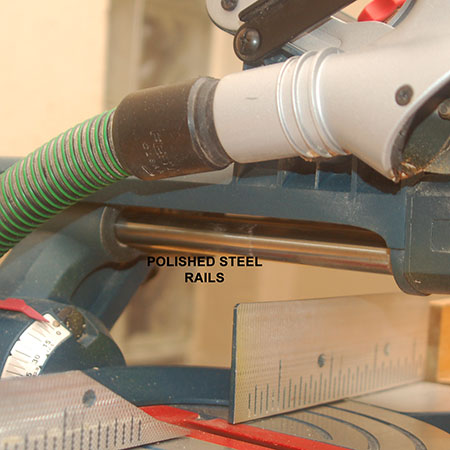Fixed or Sliding Mitre Saw?
The mitre saw is a powerful cutting tool available as static and sliding that lets you make cuts at a variety of angles; from 45-degree cuts to left or right - laterally and horizontally - and to cut compound mitres if you choose a compound mitre saw.
07/11/2018
If you're looking to buy a mitre saw, there are a few points to consider in order to buy the right model for your workshop and your needs. Firstly, here in South Africa, there are two models on the market: a sliding mitre saw and a static mitre saw that doesn't have sliding rails. The difference between these two models can affect how you can use a mitre saw.
Fixed or Sliding Mitre Saw
While my mitre saw is a sliding version, you can also buy a mitre saw that doesn't have sliding capacity and this greatly limits what you can do with this saw. The sliding mitre saw slides on polished steel rails and increases the length of project pieces that you can cut. While a fixed mitre saw can cut to a width of about 200mm wide, a sliding mitre saw, because of its sliding capability, can cut up to 350mm wide, depending on the model. The maximum cutting width on my mitre saw is 300mm.
Cutting 45-degree angles with ease
Both the fixed and sliding mitre saw can cut 45-degree angles in both lateral directions (left and right), and most models offer a system for easily locking-in for custom or odd angles. This can be extremely useful when you need to cut pieces at say, 15-degrees or 30-degrees. So check that whatever model you buy, it has this capacity. Additionally, this should not be confused with a Chop Saw, which doesn't rotate or pivot and only offers straight cuts.
The 45-degree cutting angle is perfect for those wanting to make their own picture or mirror frames, as the easily adjustable base allows you to pivot left or right to cut the pieces.
Compound sliding mitre saw
Another valuable feature to consider when buying a mitre saw is the compound angle. When you need to cut moulding or trim such as skirting boards and cornice, the compound setting allows you to adjust a mitre saw to cut compound mitre joints for these otherwise tricky angles.
All-in-all, a Sliding Compound Mitre Saw might cost you a bit more upfront, but at the end of the day this type of saw offers a wider cutting width and the ability to cut compound mitres / bevels.
Other features
There are plenty of other 'bells & whistles' that might be included on mitre saw models, some are pretty handy to have and others not so useful.
An added feature that I have used on many occasions is the integral light and laser light. The laser feature comes in very handy for lining up cutting projects for perfect cuts.
Make sure whatever model mitre saw you buy has a safe locking pin to hold the head in place. I have previously used a model (no names mentioned) where the locking mechanism released while I was carrying the saw. If you're going to be taking the saw to onsite jobs, check that the locking pin works to keep the head of the saw firmly in place.
Another great feature on my particular mitre saw is the ability to set the cutting height adjustment. I've used this on several projects for cutting half-lap (overlapping) joints for furniture projects.
We used the ability to set the cutting height on the mitre saw to cut half-lap joints to make our Farmhouse Table.















